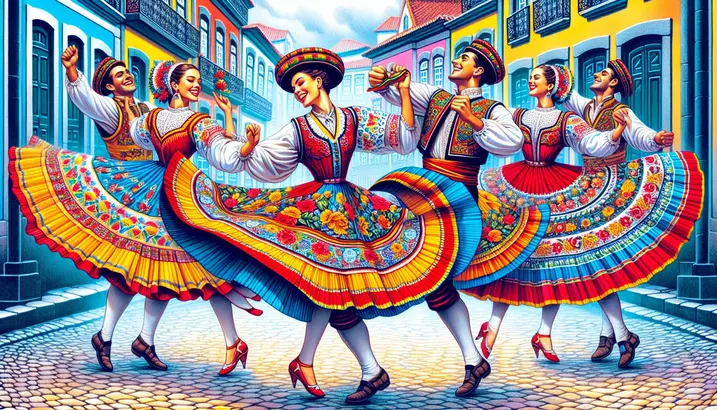The word “Goig” may not be familiar to everyone, but in certain regions of the world, particularly in Catalonia, it holds a deep significance. A “Goig” (plural: “goigs”) refers to a type of devotional song in Catalan culture. These songs are traditionally performed in praise of saints, the Virgin Mary, and other figures of Christian veneration. While these songs are often deeply rooted in religious traditions, they also serve as a window into the historical, social, and cultural identity of the regions where they are sung. In this article, we will explore the origins, significance, and modern interpretations of goig, as well as their broader impact on Catalan culture.
Origins of Goigs
The goig tradition can be traced back to medieval times, specifically to the 13th century. They were initially sung as part of religious ceremonies and festivals, acting as both a form of prayer and a communal act of worship. The word “goig” itself comes from the Catalan word meaning “joy” or “rejoicing,” which reflects the celebratory nature of these songs. While the early goigs were primarily religious, they soon took on a broader cultural significance as they were sung during local celebrations and feasts.
Throughout the centuries, goigs evolved from simple hymns into more elaborate and structured songs. Many were written in honor of local saints or to commemorate specific events, such as natural disasters, wars, or plagues. The texts of the goigs were often printed on sheets and distributed during festivals, which helped to spread their influence across Catalonia and beyond.
Structure and Themes of Goigs
Goigs are typically composed of a series of stanzas, each ending with a refrain or chorus. The lyrics often focus on the life and deeds of a particular saint, emphasizing their miraculous works, virtues, and their role as intercessors between humanity and the divine. The tone of goigs is often one of joy, hope, and thanksgiving, reflecting the belief in the saint’s ability to protect and guide the faithful.
A characteristic feature of goigs is their repetitive structure, which makes them easy to sing and memorize. This was especially important in the past when literacy rates were lower, and the songs served as a means of passing on religious and cultural traditions orally.
The themes of goigs are deeply tied to the Christian faith, and they often include appeals for protection, healing, and divine intervention. However, despite their religious roots, they also incorporate local folklore, traditions, and even elements of humor. In some cases, goigs have been adapted to reflect contemporary issues, such as political unrest or social change.
Goigs and Regional Identity
Catalonia is a region with a strong sense of cultural identity, and goigs have long been a part of that identity. Over the centuries, they have served as a way for communities to come together and celebrate their shared beliefs and traditions. In many villages and towns across Catalonia, goigs are still sung during local festivals, particularly those dedicated to the town’s patron saint.
One of the most famous examples of goigs is the “Goigs de la Mare de Déu de Montserrat,” dedicated to the Virgin of Montserrat, the patron saint of Catalonia. This particular set of goigs has been sung for centuries and remains an important part of the religious and cultural life of the region. The Virgin of Montserrat, often referred to as “La Moreneta” due to the dark color of her statue, holds a special place in Catalan hearts, and the goigs dedicated to her reflect that deep devotion.
The performance of Goig is not just a religious act; it is also a way for people to connect with their local history and heritage. The lyrics often reference specific places, events, and customs, which helps to preserve the collective memory of the community. In this sense, goigs are a living tradition, passed down through generations and adapted to reflect the changing times.
Modern Interpretations and Revivals
While the tradition of goigs may have originated in the Middle Ages, it has not remained static. In recent years, there has been a resurgence of interest in goigs, both in Catalonia and beyond. This revival is part of a broader trend of reclaiming traditional music and folk practices as a way to preserve cultural heritage in an increasingly globalized world.
In some cases, modern composers and musicians have reinterpreted goigs, incorporating contemporary musical styles and instruments. This blending of the old and new has helped to bring goigs to a wider audience, particularly younger generations who may not have grown up with the tradition. Additionally, goigs have been performed in a variety of settings, from church ceremonies to concerts and even secular events, demonstrating their versatility and enduring appeal.
The digital age has also played a role in the revival of goigs. Many of these songs, once only available in print or passed down orally, are now accessible online. Websites, social media platforms, and music streaming services have made it easier than ever for people to discover and share goigs. This increased visibility has contributed to a renewed appreciation for this ancient tradition.
Goigs Beyond Catalonia
While goigs are most closely associated with Catalonia, similar traditions exist in other parts of Spain and the broader Iberian Peninsula. In the neighboring region of Valencia, for example, there is a similar tradition of religious songs known as “Goig.” These songs share many of the same characteristics as Catalan Goig, including their devotional themes and repetitive structure.
In other parts of Europe, particularly in regions with strong Catholic traditions, one can find comparable forms of devotional music. However, what sets goigs apart is their deep connection to Catalan identity and their role in preserving the region’s cultural heritage.
Conclusion
The tradition of goigs is a testament to the enduring power of music as a form of cultural expression. These devotional songs, with their roots in medieval Christianity, have evolved over the centuries into a vibrant and living tradition that continues to bring people together. Whether sung in church, at a festival, or in a more modern setting, goigs serve as a reminder of the deep ties between religion, culture, and community.
For the people of Catalonia, goigs are more than just songs—they are a symbol of their shared history and identity. As the world continues to change, the revival of goigs and their adaptation to modern life demonstrate that even the oldest traditions can find new relevance and meaning in today’s society.







